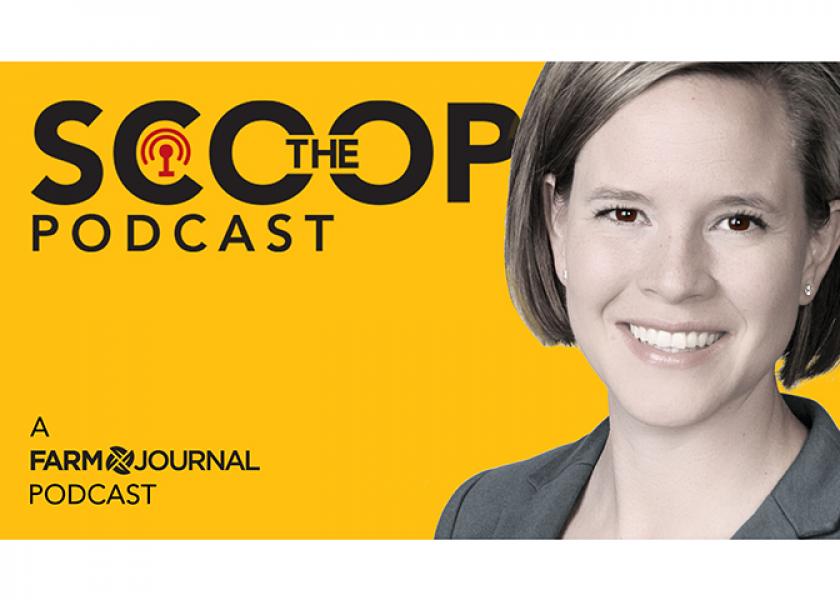The Scoop Podcast: Layers Of Technology Uncover Higher Yields

Ethan Noll, Digital Ag Team Lead, at Ag Partners Co-op joins the podcast to share how he works to help farmers use technology to raise higher yields and improve input use.
Tell us about your role at digital ag team lead.
It really consists of two things.
One: digital ag. I essentially use technology to solve customer’s problems, make them more efficient in the field, and more productive–all by using technology.
Then there's the team lead part. What that really is helping to combine the knowledge and skills of each of our team members and bringing that together so the product is greater than the sum of its parts. It’s really just bringing that team together, using their skills and just making it all run smooth. We really have talented individuals that bring a lot to our company and I'm fortunate to get to help lead them in that digital ag realm.
You have a background as a soil scientist and a background in agronomy how does that inform your role in digital agriculture?
For soils, it’s really the basis of everything underground. Whether that's nutrients, soil texture, water availability, or restrictive layers they are all the foundation of everything we do. An understanding of that really lays the groundwork for everything in agronomy.
But the other thing is spatial analysis. What I learned as a soil scientist out in Northwest Wyoming really directs what we do here. That's where does water flow, how does the slope and shape affect it, how does water move, what’s the depth of the topsoil? And so all this affects yield.
We can use this knowledge to change things like populations or amount of nutrients applied and which nutrients were applied and where and which hybrids to use, where weeds are going to be, which insecticide touse and where.
Soil is really dynamic, and just understanding how everything affects everything within a soil is similar to what's happening above ground too. There's just a lot of cause and effect in agronomy and understanding those causes and effects lends a hand to all that site specific agriculture that we work on.
So you're really charged with providing like the so what to farmers, right? What technologies are you finding value in today.
We're using Taranis for scouting. And Taranis is really the basis of what we're able to do with Rantizo. So Taranis takes a picture every acre on the field. So we can really identify pressures by the nutrient deficiencies, insect pressure, where they are within a field. If we know where they are within a field, we can be site specific with our applications with Rantizo. If we know there's weeds in an area, we'll just spray Roundup over that area rather than over the whole field. And Roundup is really expensive right now because of supply shortages. And so that's a big deal.
We're also using looking at a company called Sentinel Irrigation technologies. They're using imagery through drones and satellite imagery to identify where nitrogen deficiencies are within a field under pivot or any kind of irrigation. So by being able to identify where the nutrient deficiencies are, and by how much their algorithms tell us how much fertilizer to apply, when we go to fertigate that crop and they found customers are saving about an average of $29 an acre and in many cases, you're going to find a lot greater if the customer's really over applying and trying to push that crop. We've found that the nitrogen use efficiency has increased significantly, almost in every case.
What do you share with those who are skeptical about technology?
In the last 30 years, we've seen the focus on scaling up to bigger equipment, a centralization of facilities, and that's made customers a lot more efficient. And really what we're doing is scaling down–farming by the foot. And so if the customers are really focused in on maximizing their efficiency, my goal is to really scale down to that foot rather than just the whole field of the whole farm. Because the savings are significant, whether it's variable rate fertilizer, variable rate planting, and then maximizing those yields, maximizing the return on investment. If I really focus on the return on investment that really opens the customer's eyes to what we're doing. Because everything we'd really do is about return on investment and money talks. And that's really how I get to those farmers are skeptical about what we are doing.
What do you think the future of digital agriculture looks like?
I talked about scaling down. And I think that's going to be the future. And I think we're going to do that with sensors and autonomy.
Sensors are going to allow us to know what's going on within our field at any given time and sensors on our pivots, planters and combines. I think we're going to see more of that. And then just sensors for scouting purposes. That's going to allow us to farm by the foot.
Then autonomy is going to allow us to get the nutrients and products where we need them, whether that's through a drone like what we're doing with Rantizo or whether that's through some kind of autonomous machine.
You can't do one without the other. You have to have the scouting to have a site specific application. And if you don't have site specific application, then what's the point of having really focused scouting?
You can hear the full interview on The Scoop Podcast. He talks about:
- data privacy and usage agreements
- challenges in the year ahead
- his words for those in the early years of their career in ag retail
- and more







